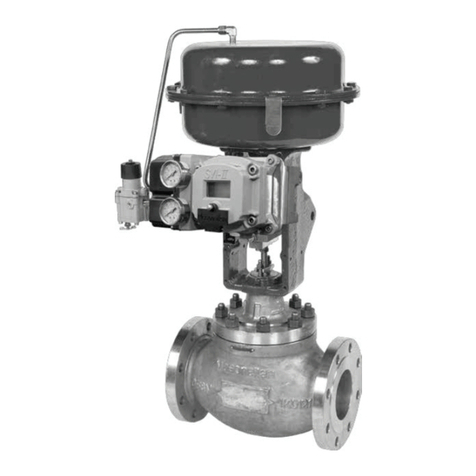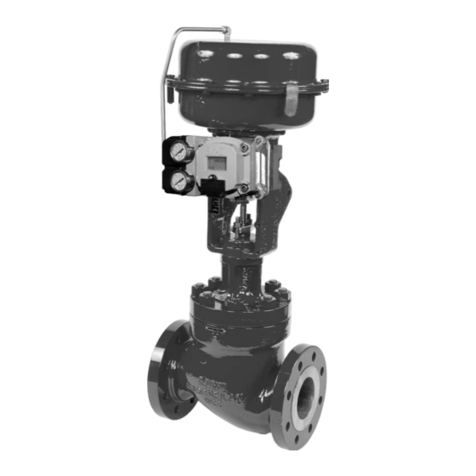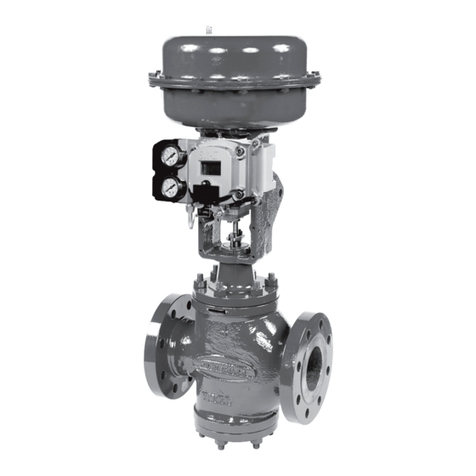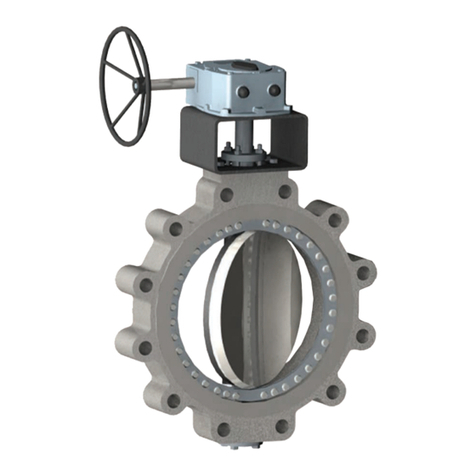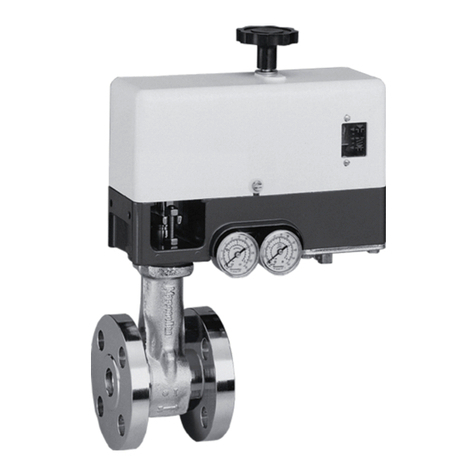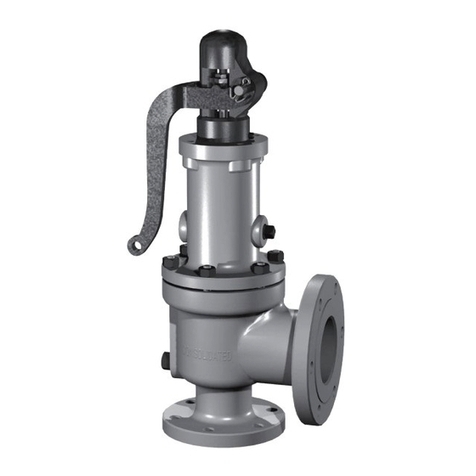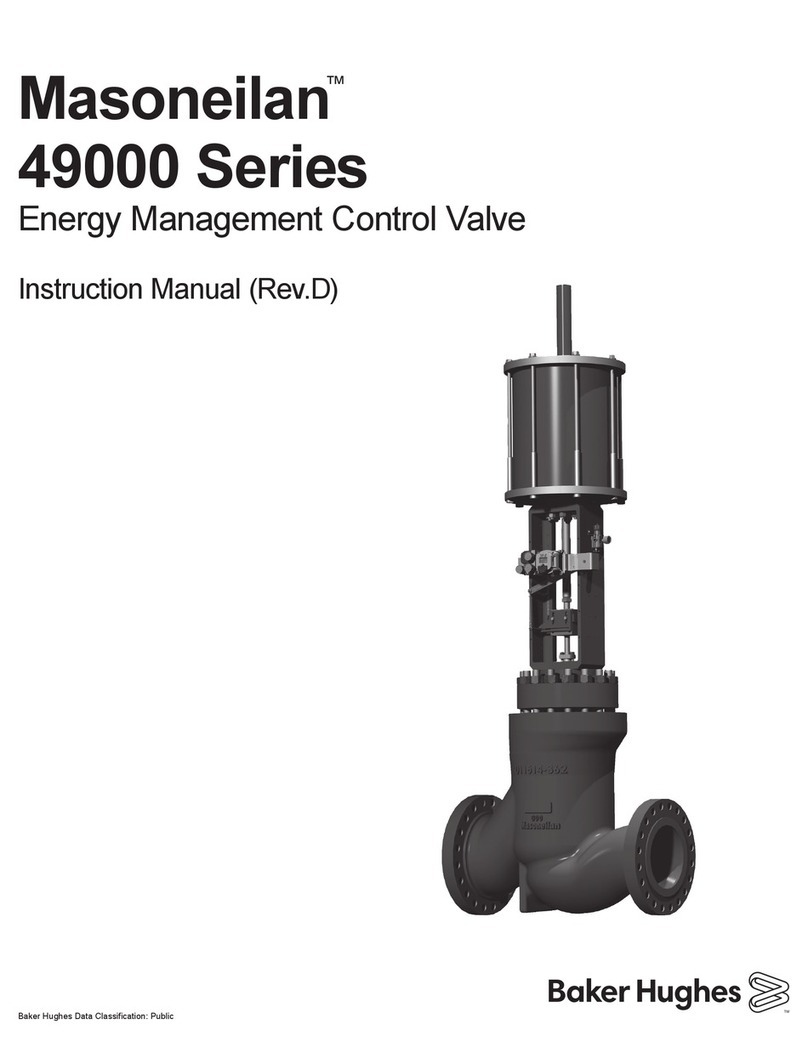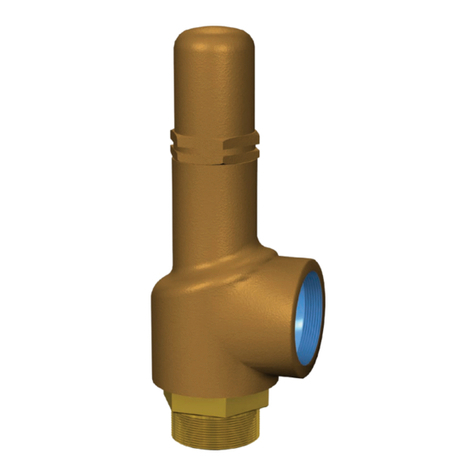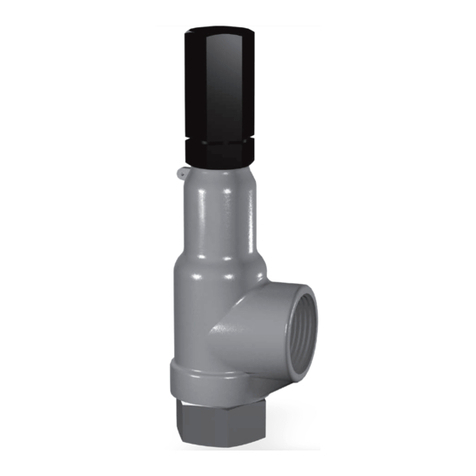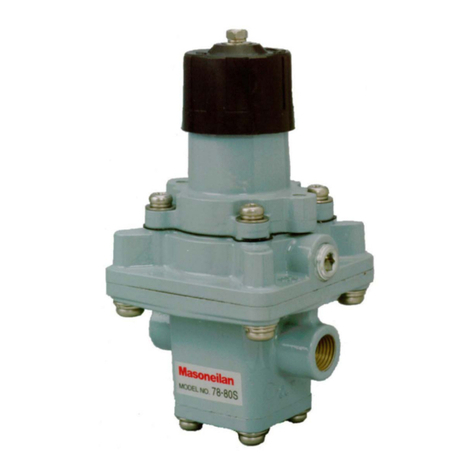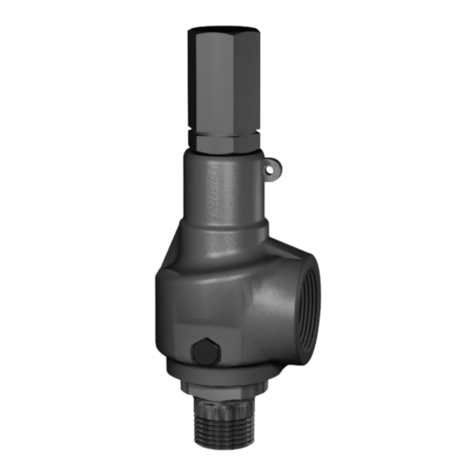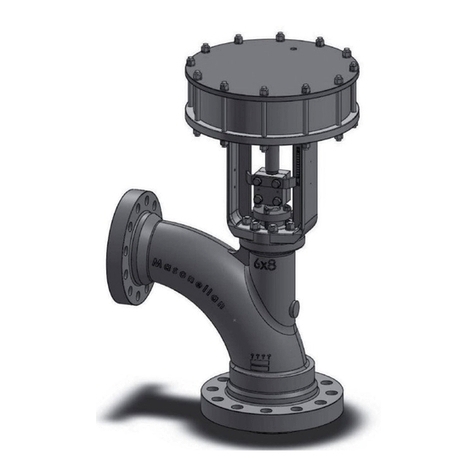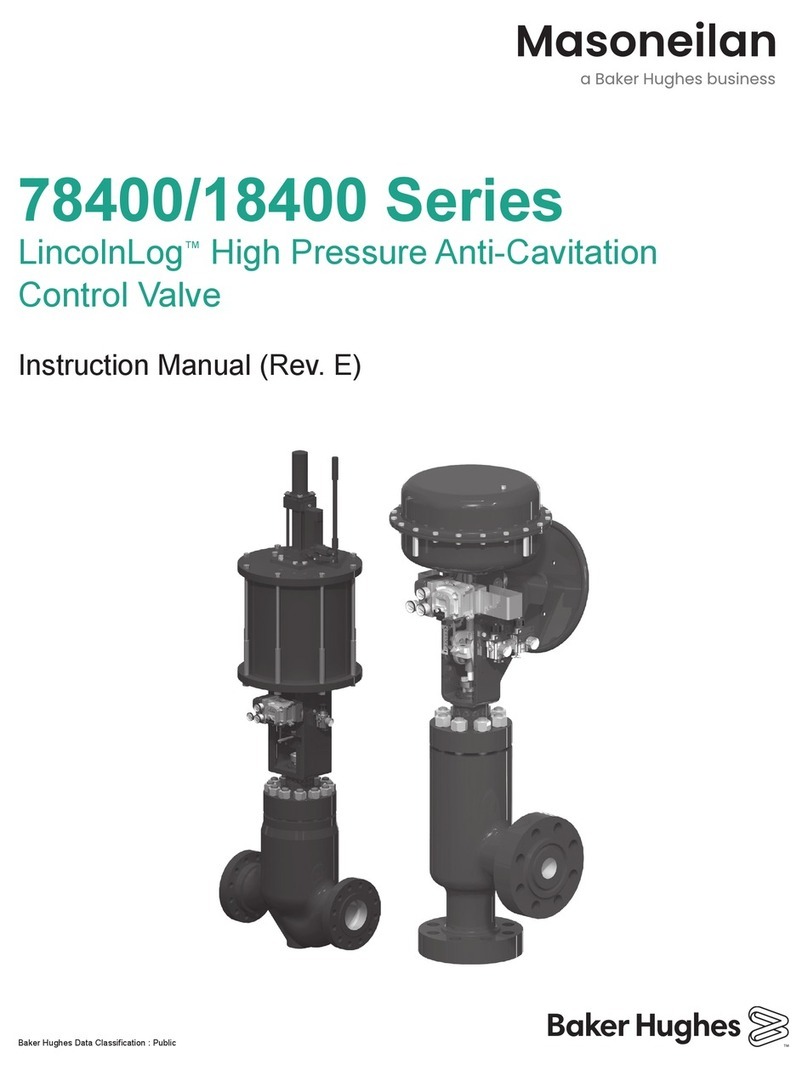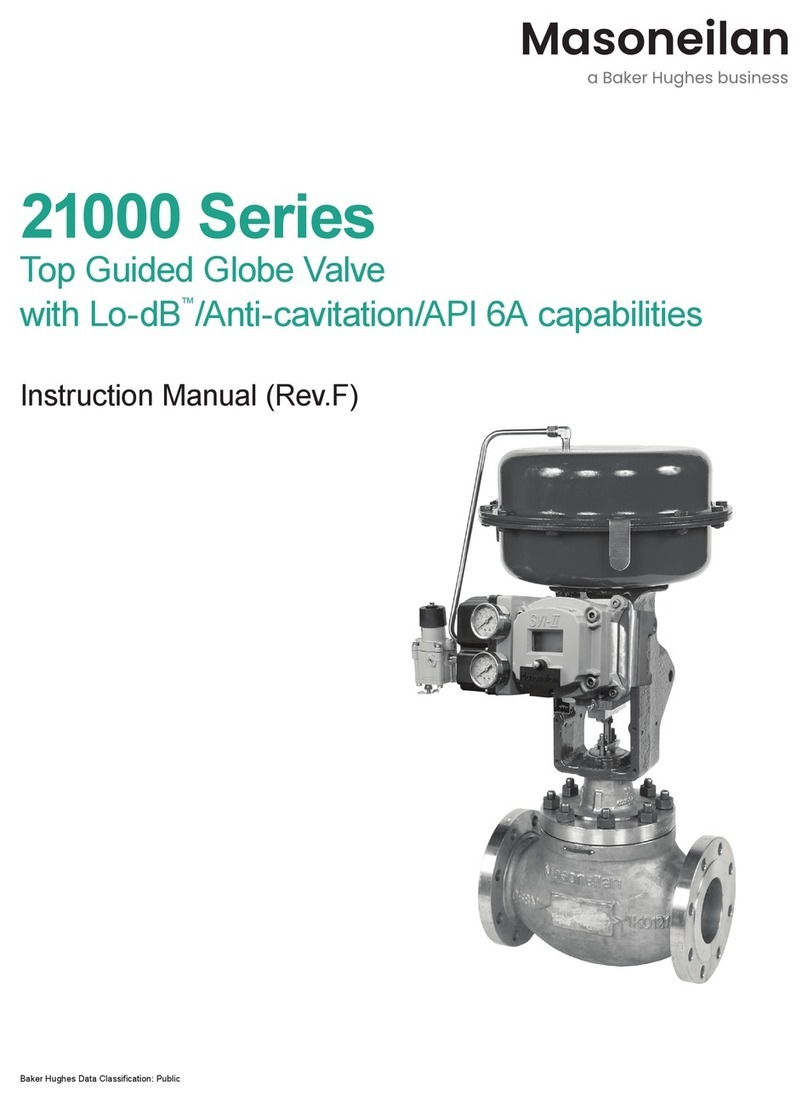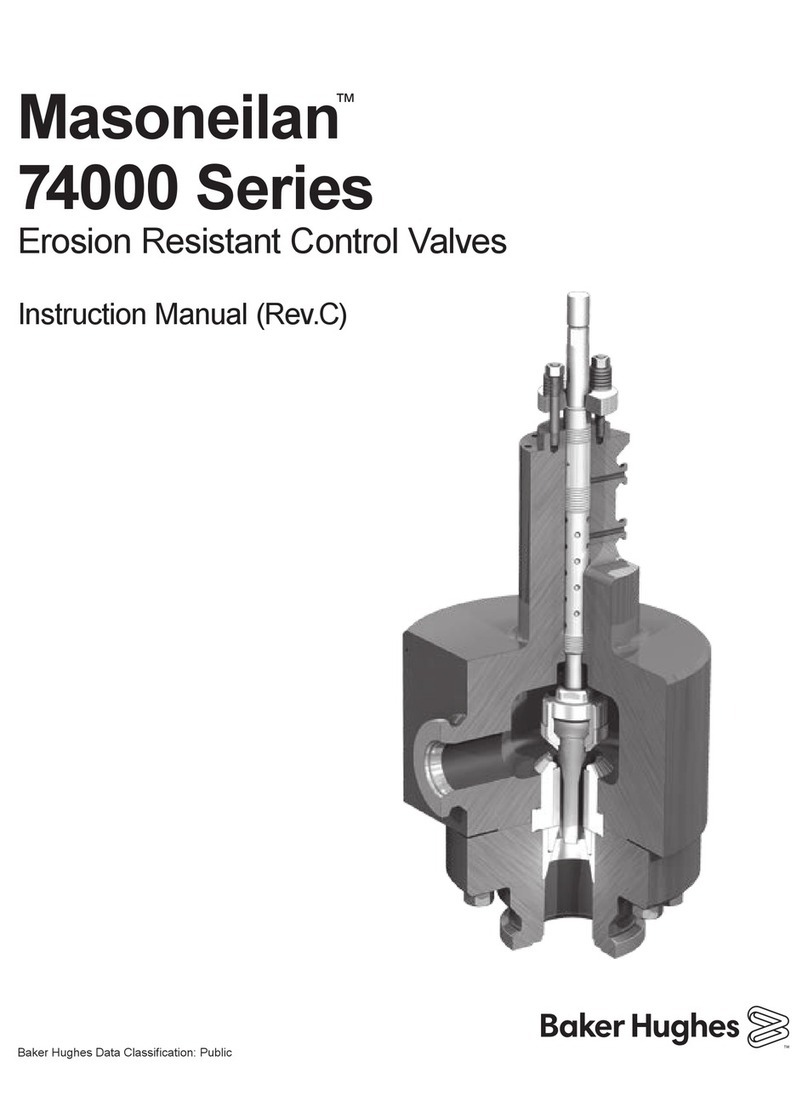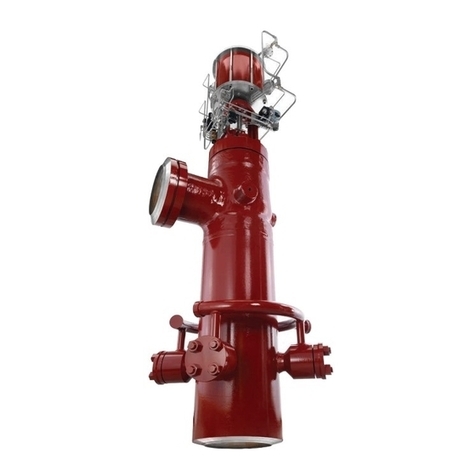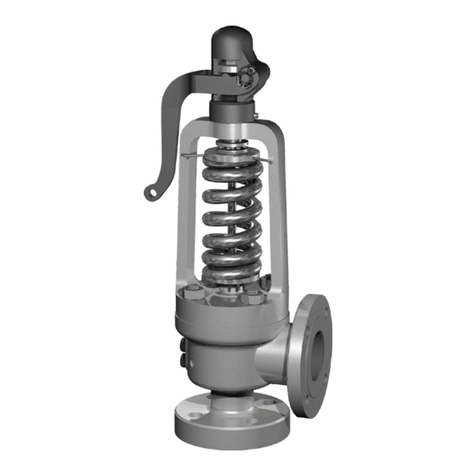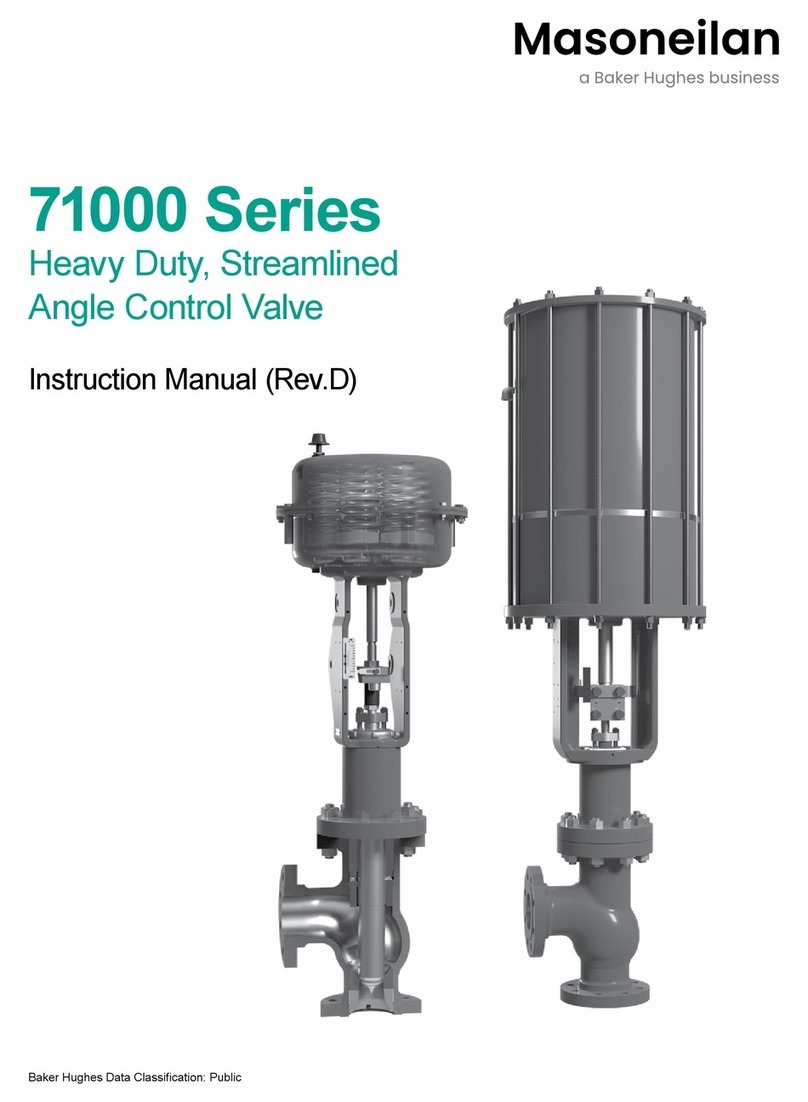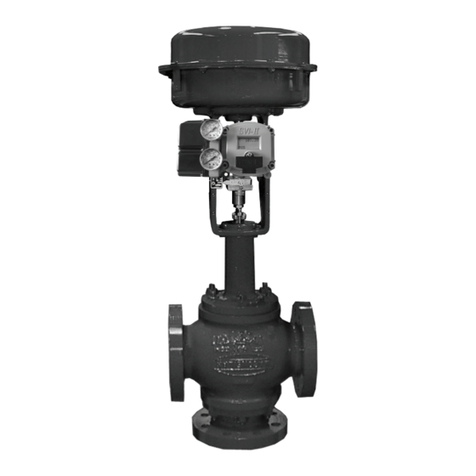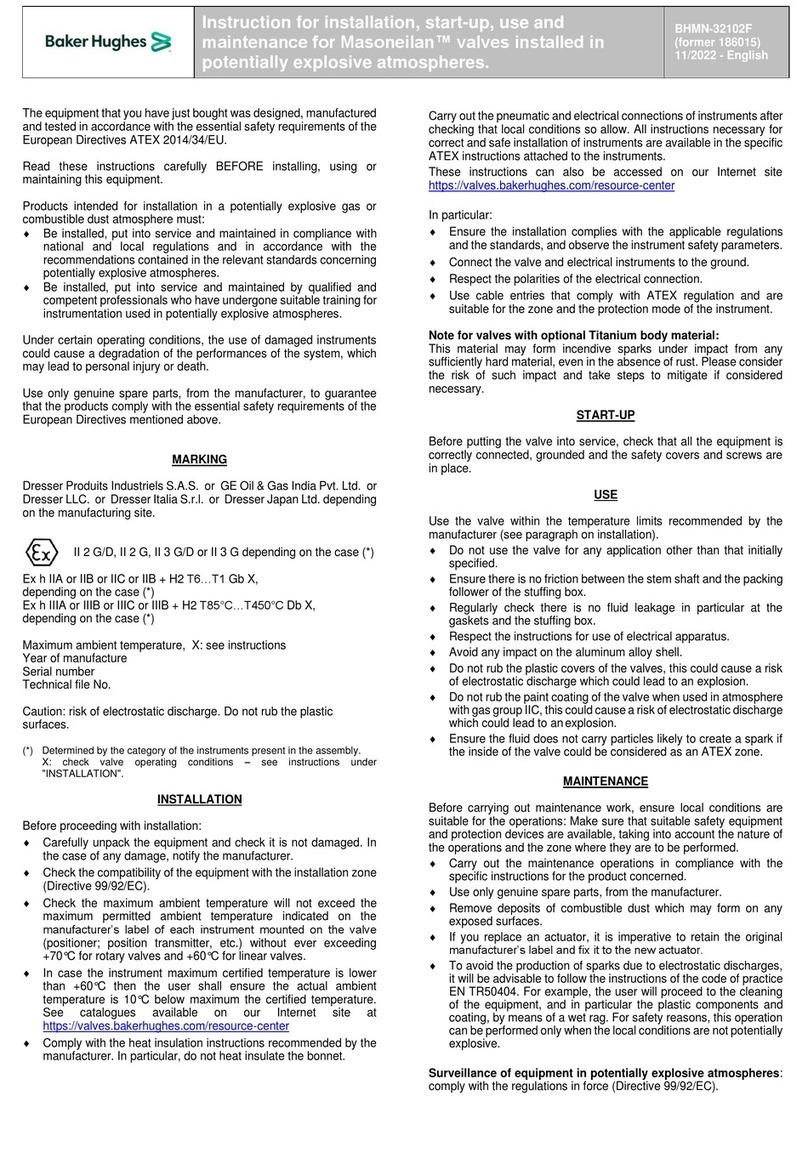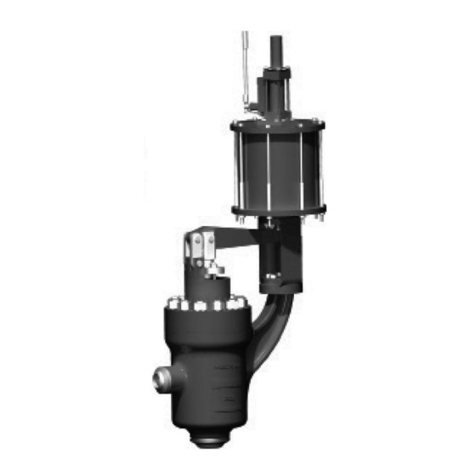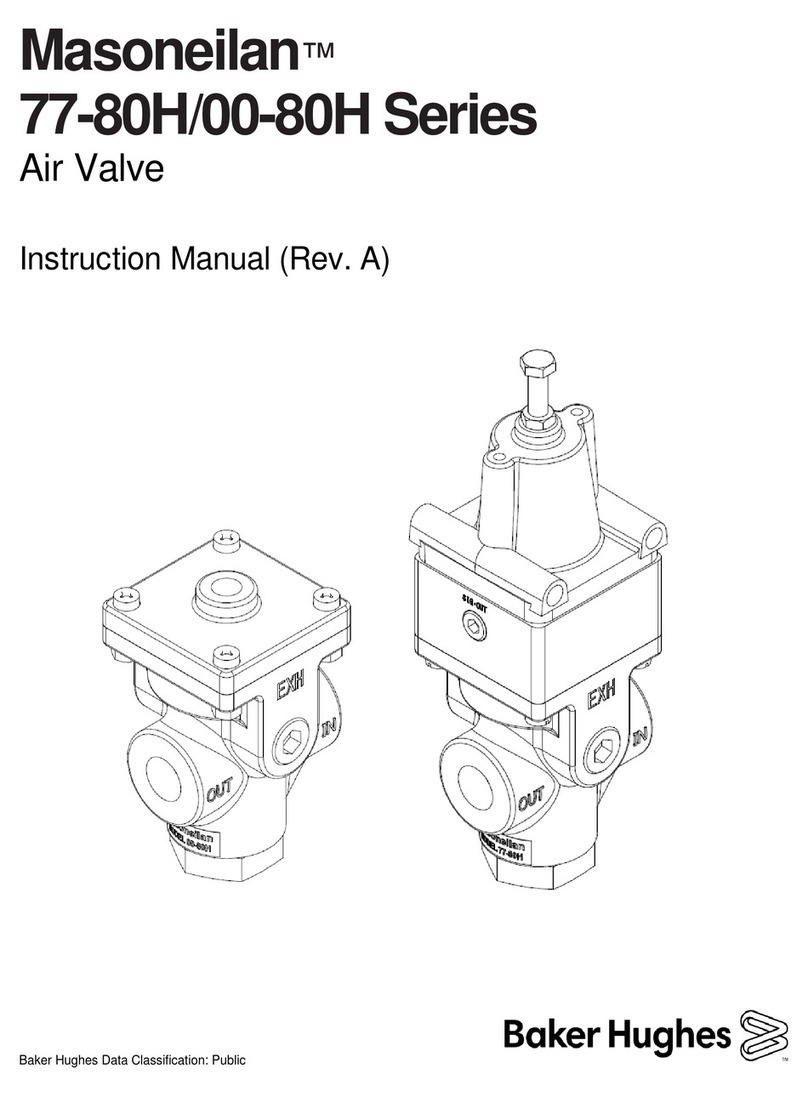
6 | Baker Hughes Copyright 2020 Baker Hughes Company. All rights reserved.
H. Remount actuator onto housing and replace actuator
mounting hex nuts (75) and washers (76). Position lever (32)
so that rod end bearing (94) lines up in lever (32) and that the
pads on the lever will contact the stop bolts (102). Tighten
lever cap screw (33).
I. Rotate ball plug (2) to closed position. Adjust closed position
travel stop (102) until it contacts the pad on lever (32).
Tighten locknut (101).
J. Rotate ball plug (2) to open position. Adjust open position
travel stop until it contacts pad on lever (32). Tighten locknut
(101).
CAUTION
CAUTION
WARNING
DANGER
Ensure rotation of AC actuator does not exceed
90deg. Damage to actuator rod may result.
K. If actuator action is air to open, rotate ball plug (2) to open
position. Pneumatically stroke actuator to open position.
Loosen rod end bearing locknut (93) and adjust position of
rod end bearing (94) so that holes in lever (32) and rod end
bearing (94) line up. Insert pivot pin (39) and retaining rings
(40).
CAUTION
CAUTION
WARNING
DANGER
When stroking valve keep hands and equipment
clear of ball plug and seal ring to avoid injury or
damage to personnel and equipment.
L. If action is air to close place ball plug (2) in closed position.
The pad on lever should contact the closed position travel
stop (102). If it does not, repeat adjustment as noted in step
I above. Return ball plug (2) to open position. Pneumatically
stroke actuator to open position.
CAUTION
CAUTION
WARNING
DANGER
Do not exceed maximum air supply pressure.
Keep hands clear of actuator stem and linkage.
Loosen rod end bearing locknut (93) and adjust rod end bearing
(94) so that holes in lever (32) and rod end bearing (94) line up.
Insert pivot pin (39) and replace retaining rings (40).
M. For both air to open and air to close action, stroke valve fully
to ensure proper closure of ball plug and operation of valve.
It may be necessary to readjust rod end bearing slightly by
loosening locknut and rotating stem.
N. Replace handwheel assembly in housing (31), washer (54-7)
and retaining clip (54-4).
O. Replace shaft cover (42) and screw (43).
P. Set and lock indicator arm (35) to indicate plug position.
2.5 Changing Valve Action
Note: If the valve action is to be changed it should be done
before the valve is installed in the line. This allows a positive
visual check to ensure that the ball plug is fully closed when
the actuator is in the proper position.
2.5.1 Model 33, sizes B & C only. For size AC refer to section
2.5.2
A. If the valve is equipped with a handwheel disengage the
handwheel and remove retaining clips (63), clevis pin (66),
and pivot pins (39). Remove cap screws (70), washers (71)
and handwheel bracket (62).
B. If necessary, scribe a witness mark on the lever (32) in relation
to the slot on the end of the shaft (5). Note: Standard lever
has arrows stamped into it for alignment. For handwheel
lever use slot for alignment.
C. Remove pivot pin retaining clips (40), pivot pin (39) and
spacer rings (69). Remove shaft cover (42) and screw (43).
Remove actuator hex nuts (75) and washers (76). Remove
actuator.
Note: Spacer rings apply only on handwheel option.
D. Loosen lever cap screw (33). Remove packing flange stud
nuts (24), bracket mounting stud nuts (24) and washers (18).
Loosen ball plug indicator arm (35).
E. Slide bracket (31) away from body until it clears bracket and
packing flange mounting studs. Remove lever (32), lever
arm (64) and indicator arm (35) from shaft.
CAUTION
CAUTION
WARNING
DANGER
Before proceeding determine valve action (air to
open/air to close), refer to the appropriate gure
(Figure 10 to open, Figure 11 to close). To obtain
proper alignment, the lever must be oriented on
the shaft so that the slot in the end of the shaft
and arrows or indicator lines are aligned as
shown; with the ball in the closed position, the
distance between the top of the bracket and the
top of the pivot pin must be as shown.
F. Flip lever (32) and lever arm (64) and replace on shaft 90
away from original position. Replace indicator arm (35).
Slide bracket back onto bracket mounting studs (26), replace
washers (18) and nuts (24) and tighten. Slide packing flange
(23) back over packing flange studs (25) and replace packing
flange stud nuts (24) and tighten.
G. Replace actuator on bracket in correct mounting position for
air action. Replace actuator stud nuts (75) and washers (76).
Position lever (32) and lever arm (64) so that rod end bearing
(94) lines up in lever (32). Tighten lever cap screw (33).
H. Place ball plug (2) in closed position. If actuator action is air
to open, loosen rod end bearing nut (93) and adjust position
of rod end bearing (94) so that holes in lever (32) and rod
end bearing (94) line up. Insert pivot pin (39) and replace
retaining rings (40).
I. If action is air to close, place ball plug (2) in closed position
and pneumatically stroke actuator fully.
CAUTION
CAUTION
WARNING
DANGER
Do not exceed maximum air supply pressure.
J. For both air to open and air to close action, stroke valve fully
to ensure proper closure of ball plug and operation of valve.
Tighten rod end bearing locknut (93).
